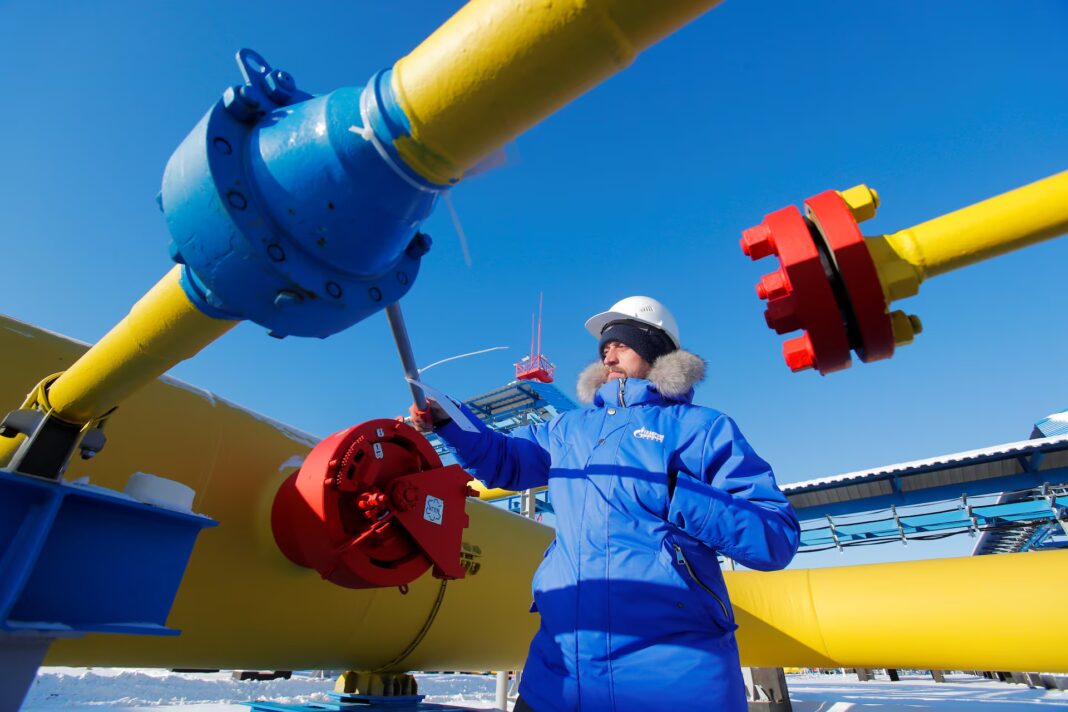Russia Cuts Gas Supplies to Austria
On Saturday, Russia stopped sending natural gas to Austria, intensifying the ongoing energy standoff with Europe. Austria had been receiving gas through a pipeline running from Russia via Ukraine. However, a payment dispute led Moscow to suspend deliveries to Austria’s largest energy supplier.
Austria confirmed the halt early in the morning, but officials reassured citizens that energy prices and supplies remained stable. Gas companies said storage levels were sufficient to manage the disruption, at least in the short term.
The Dispute Over Payments with Austria
The conflict arose after Austria’s energy company OMV sought compensation for damages caused by unfulfilled gas deliveries. It planned to offset the awarded amount, €230 million, against future payments to Gazprom, Russia’s state-owned gas firm. In response, Gazprom cut off supplies.
Despite the suspension, Gazprom continued sending the usual daily volumes of gas through Ukraine to Europe. Buyers from other European countries increased their purchases, showing sustained demand for Russian gas even amid geopolitical tensions.
Ukraine’s Pipeline Agreement Ending
The gas pipeline through Ukraine has been a critical route for Russian gas to Europe for decades. However, the agreement allowing its operation is set to expire at the end of this year. Ukraine has decided not to renew the deal.
This decision could shut one of the last major supply lines for Russian gas to European countries like Slovakia, the Czech Republic, and Austria. With fewer buyers remaining, Hungary and Slovakia are the only significant European markets still relying on Russian gas.
Energy Plans of Austria
Austria usually gets around 40% of its gas via the Ukraine route. The halt comes at a challenging time, but Austrian authorities are confident they can manage. Officials said they are not yet substituting Russian gas with imports from other countries like Germany or Italy.
The government emphasized that Austria’s gas storage levels were high, reducing immediate concerns of shortages. Energy regulators assured consumers that measures were in place to maintain steady supplies through winter.
Europe’s Shifting Energy Landscape
The suspension highlights Europe’s broader efforts to reduce dependence on Russian energy. Before the war in Ukraine, Russia supplied about 35% of Europe’s natural gas. That has dropped sharply as the EU seeks alternative sources.
Norway, the United States, and Qatar have become major suppliers, replacing much of the Russian gas. The Nord Stream pipelines, once a key route for gas to Germany, were damaged in 2022, cutting off another major supply channel.
Gas Politics and Economic Fallout
Russia has used its gas exports as a political tool during the war. However, the loss of European customers has hurt its economy. At the same time, Europe faces higher energy prices and the challenge of building new supply chains.
Russia’s president claimed the country is still open to cooperation with Europe if agreements can be reached. However, trust between the two sides remains strained, with accusations flying over past disruptions and pipeline attacks.
Hungary and Slovakia: The Last Buyers
With Austria out of the equation, only Hungary and Slovakia are receiving significant volumes of Russian gas. Hungary gets its supplies through a pipeline that mostly runs through Turkey. Slovakia continues to use the Ukraine route for now.
In 2023, the Ukraine pipeline supplied 65% of the gas needed by Austria, Hungary, and Slovakia. However, with the agreement expiring, these countries must prepare for a future without Russian gas.
The Path Ahead
The dispute between Austria and Russia underscores Europe’s shift away from reliance on Russian energy. While Austria and other countries have storage reserves to manage the current crisis, long-term solutions are needed.
The energy landscape in Europe is changing rapidly, with new suppliers and infrastructure projects shaping the future. For now, the focus remains on ensuring stable supplies and preventing disruptions as winter approaches.

